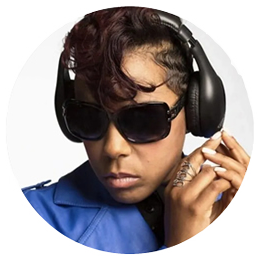Introduction
My Personal Journey
Let’s start with a bit of my story. When I set my sights on grad school, the GRE was a major obstacle. This test, loaded with tough math, didn’t reflect my true abilities, despite my strong academic background. This was a common sentiment expressed within the blind & visually impaired community. Thankfully, Baylor University saw beyond the test scores and admitted me based on my GPA, having wisely dropped the GRE requirement during the COVID-19 pandemic. Many schools, including some Ivy Leagues, made similar changes. This experience made me realize just how flawed standardized testing can be in assessing a student’s potential.
Understanding Human Intelligence
Human intelligence goes beyond just book smarts. It’s about creativity, problem-solving, empathy, emotional intelligence, and communication. These skills are the heart of innovation and effective teamwork, and they’re what make us uniquely human in a world that’s increasingly automated.
What is Universal Design for Learning (UDL)?
So, what exactly is UDL? It’s an educational approach that makes learning accessible and effective for everyone by offering:
- Engagement: Different ways to motivate students. This might mean giving them choices in how they learn and what topics they explore.
- Representation: Various formats for presenting information. Think text, audio, video, or hands-on activities, all catering to different learning styles.
- Action and Expression: Multiple ways for students to show what they know. Instead of just tests, they might write essays, create projects, or give presentations.
Key Concepts for Empowering Students
- Creative Thinking: Imagine classrooms where students are encouraged to think creatively and come up with original ideas. This kind of environment sparks innovation and helps students tackle problems from new angles.
- Empathy and Relationships: Building meaningful connections and understanding others are key to effective teamwork and leadership. Empathy enhances collaboration and creates a supportive atmosphere.
- Emotional Intelligence: Managing emotions and navigating social complexities are crucial skills. Emotional intelligence helps students handle stress, resolve conflicts, and build strong relationships.
- Contextual Reasoning: Teaching students to see the bigger picture helps them make informed decisions. Understanding the context of a problem allows for more nuanced and effective solutions.
- Complex Problem-Solving: Preparing students to tackle multifaceted challenges with innovative solutions is vital. This involves critical thinking, analysis, and the ability to synthesize information.
- Design Thinking: Focusing on human-centered problem-solving encourages students to develop solutions that truly meet people’s needs. This approach promotes creativity and practical application.
- Adaptability: In our fast-changing world, adaptability is key. Teaching students to be flexible and open to new ideas prepares them for dynamic environments.
- Collaboration: Working together towards shared goals is essential. Collaboration skills enable students to contribute effectively in diverse teams.
- Effective Communication: Clear and persuasive communication is fundamental. Teaching students to convey their ideas effectively ensures they can advocate for their solutions and work well with others.
UDL and Human Intelligence: A Synergistic Approach
When we combine UDL with a focus on human intelligence, we get a powerful educational model. By making learning environments accessible and inclusive, we can unlock every student’s full potential. This approach not only benefits those with disabilities but also enriches the learning experience for everyone.
Solutions for a Better Future
By integrating UDL with human intelligence principles, we create a pathway to more personalized and effective education. Recognizing that every student learns differently and providing the flexibility to meet those diverse needs prepares students, not just for the workforce, but also to navigate our complex world.
At VisioTech, I’m dedicated to empowering students with the skills they need to succeed. By focusing on human intelligence and implementing UDL, we can bridge the gap between traditional education and what our modern world demands. Additionally, VisioTech is developing an interactive learning management system called Peripheral, which is in the research and development phase. Peripheral aims to teach blind and visually impaired students the essentials of artificial intelligence and machine learning through a holistic approach that utilizes Universal Design for Learning. While separate from the Human Intelligence Movement, Peripheral reflects our commitment to making advanced education accessible to all students, regardless of their abilities.
Visit the Human Intelligence Movement to learn more about how you can be part of this transformative journey. Together, we can create a future where every student is equipped to thrive.
